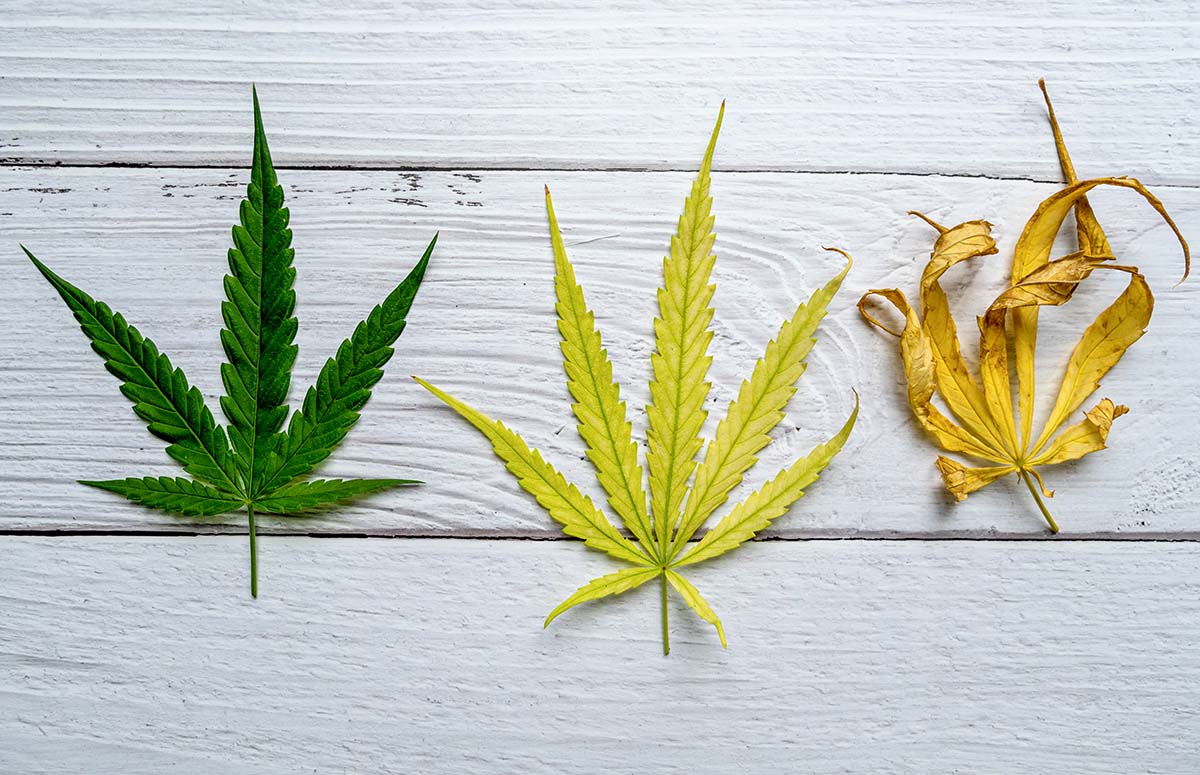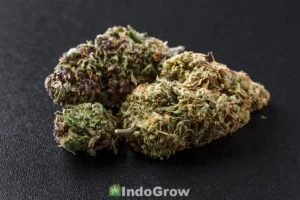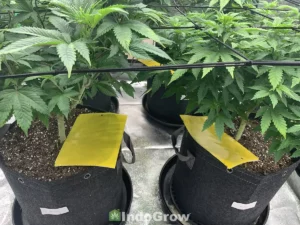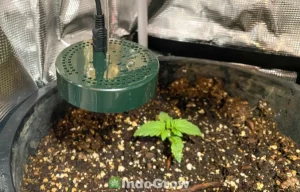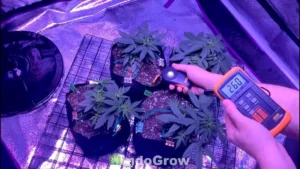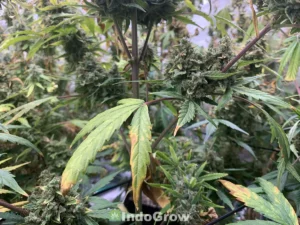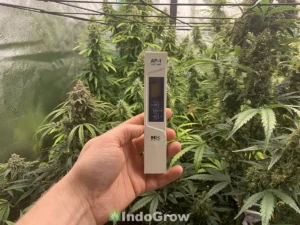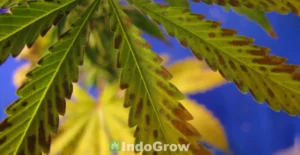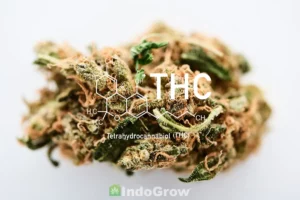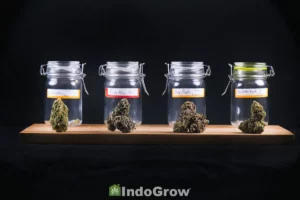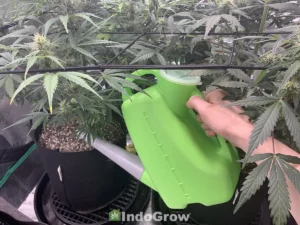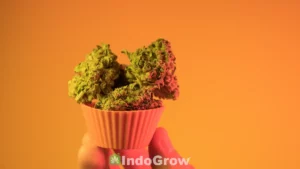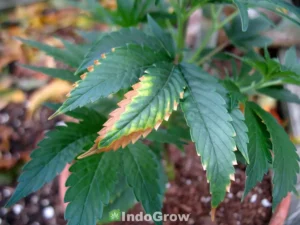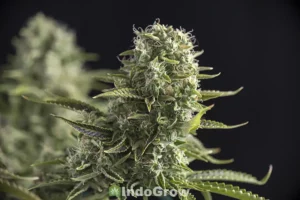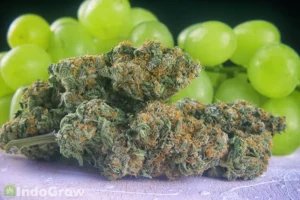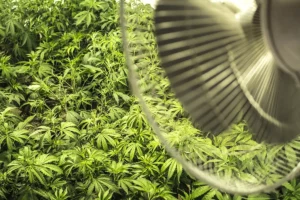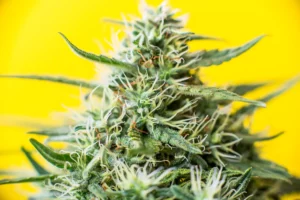Nitrogen is an essential macronutrient for Cannabis, used to produce chlorophyll and build DNA. Cannabis nitrogen toxicity or deficiency can lead to serious problems for your plants if not addressed quickly. The exact amount of nitrogen a cannabis plant needs varies throughout its life, with the greatest amount of nitrogen being used during periods of rapid vegetative growth.
If the cannabis plant has too little nitrogen, it can become nitrogen deficient and display symptoms like yellowing and loss of the lower leaves. On the other hand, too much nitrogen can cause nitrogen toxicity, which often causes leaves to become dark green and curled at the tip. In either case, plants with too much or too little nitrogen will have slowed, stunted growth that can progress to death if the problem is too severe.
This article will help you select the best nitrogen fertilizer for each life stage of cannabis, and teach you how to recognize and treat the symptoms of both nitrogen deficiency and nitrogen toxicity.
How Much Nitrogen to Feed Weed Plants?
Cannabis plants will need differing amounts of nitrogen at different stages in their lives. They consume large amounts of nitrogen in order to build their leaves and branches in the vegetative stage, then taper off their nitrogen consumption as they begin to flower.
The three macronutrients that cannabis plants consume in large quantities are Nitrogen, Phosphorus, and Potassium. The ratio of these three macronutrients is expressed on fertilizer labels as NPK. For example, a fertilizer with a 3-1-2 ratio has 3 times as much nitrogen as phosphorus, and 1.5 times as much nitrogen as potassium.
Cannabis nutrients are available in both synthetic and organic forms, each with their own benefits and drawbacks.
Synthetic nutrients are formulated in factories, and they typically have very exact amounts of each macro and micro nutrient in each dose. Although synthetic fertilizers give the grower greater control over the nutrient profile of their soil, synthetic fertilizers must be applied more regularly and are more likely to damage root systems or kill beneficial soil microbes.
Organic nutrients include products such as compost, manure, blood meal, bone meal, fish meal, worm castings, and more. Compared to synthetic nutrients, organic products release nutrients more slowly and often have a positive impact on microbial life in the soil. Although organic nutrients have many benefits, they can be more costly and time consuming to use, and they have more variation in exact nutrient composition than their synthetic counterparts.
Nutrients can be purchased in either liquid or powdered form. Liquid nutrients do not need to be mixed before adding them to your plant’s water. However, powdered nutrients have a longer shelf life and take up less space to store. Ultimately, the choice between liquid and powdered nutrients often comes down to personal preference.
How Much Nitrogen for Cannabis Seedlings?
During its first weeks of life, the cannabis seedling will receive all the nutrients it needs from its seed. The seedling will first produce two cotyledons, or ‘false leaves’ which it uses to collect moisture from the air before the root system develops.
After 2-3 weeks, the cotyledons will be replaced by a pair of true leaves and the cannabis seedling will have an advanced enough root system to take nutrients from the soil. If you are using soil that already contains nutrients, you will not need to fertilize until the plant reaches the vegetative stage. If you are using a nutrient fee medium such as coco coir, you can now add a small amount of 2-1-2 fertilizer.
How Much Nitrogen for the Cannabis Vegetative Stage?
During the vegetative stage, cannabis plants need large amounts of nitrogen to produce new branches and leaves.
You will want to select a fertilizer that has a high concentration of Nitrogen (N) and a low concentration of phosphorus (P). Examples of suitable NPK ratios include 5-2-4, 10-5-7, or 15-8-10.
During the early vegetative phase, you will want to start with a half dose of fertilizer and slowly build up the concentration to ¾ or 1 full dose. Gradually increasing the available nutrients in this way decreases the chances that your plant will suffer from nutrient burn.
How Much Nitrogen for the Cannabis Flowering Stage?
During the flowering stage, nitrogen becomes less important as the plants shift from producing foliage to flowering. Fertilizers for flowering plants should be low in nitrogen (N) and high in phosphorus (P), an essential nutrient for flower development.
In the early flowering stage, cannabis plants will have one final burst of leafy growth, so they will still require some nitrogen. Suitable NPK ratios for early to mid flowering stage cannabis plants include 5-10-5 or 10-20-10.
Finally, during the late flowering stage, the plant’s leaves will begin to die off as it focuses exclusively on flowering. No nitrogen is needed during this stage, so ideal NPK ratios will include 0-13-14 or 0-25-32.
What Does Cannabis Nitrogen Toxicity Look Like?
The first signs of nitrogen toxicity include dark green leaves that curl downwards at the tip into a claw-like shape. The leaf tips may turn yellow or crisp and brown. Eventually, the affected leaves will develop brown necrotic spots, and the plant’s new growth will be frail and stunted.
Excessive nitrogen in the cannabis plant can decrease the availability of other essential nutrients like phosphorus and potassium. This can eventually cause a wide range of nutrient deficiency symptoms such as yellowing or loss of leaves, decreased resistance to pests, and more.
How to Fix Cannabis Nitrogen Toxicity?
The most common causes of nitrogen toxicity are overfertilizing and improper soil pH. If you suspect nitrogen toxicity in your plants, a good first step is flushing the soil with distilled water to remove nitrogen salts that may be building up in the soil.
Once you have flushed the soil, test the pH of the plant’s runoff water. If the pH is above 6.5 or below 5.5, you may need to add a pH adjusting fluid to return it to normal range. Unusually low or high pH levels often cause plants to take up too much or too little fertilizer from the soil.
If soil pH is normal and your plant is still experiencing nitrogen toxicity symptoms, you may be overfertilizing. Check your fertilizer’s instructions and make sure you are diluting the fertilizer properly and never adding more than one dose of fertilizer per watering. If you are using the standard dose of fertilizer already, consider feeding less often or diluting to a half dose of fertilizer.
After flushing the soil and correcting pH or overfertilization, your plant should show signs of improving health within about 5-7 days.
What Does Cannabis Nitrogen Deficiency Look Like?
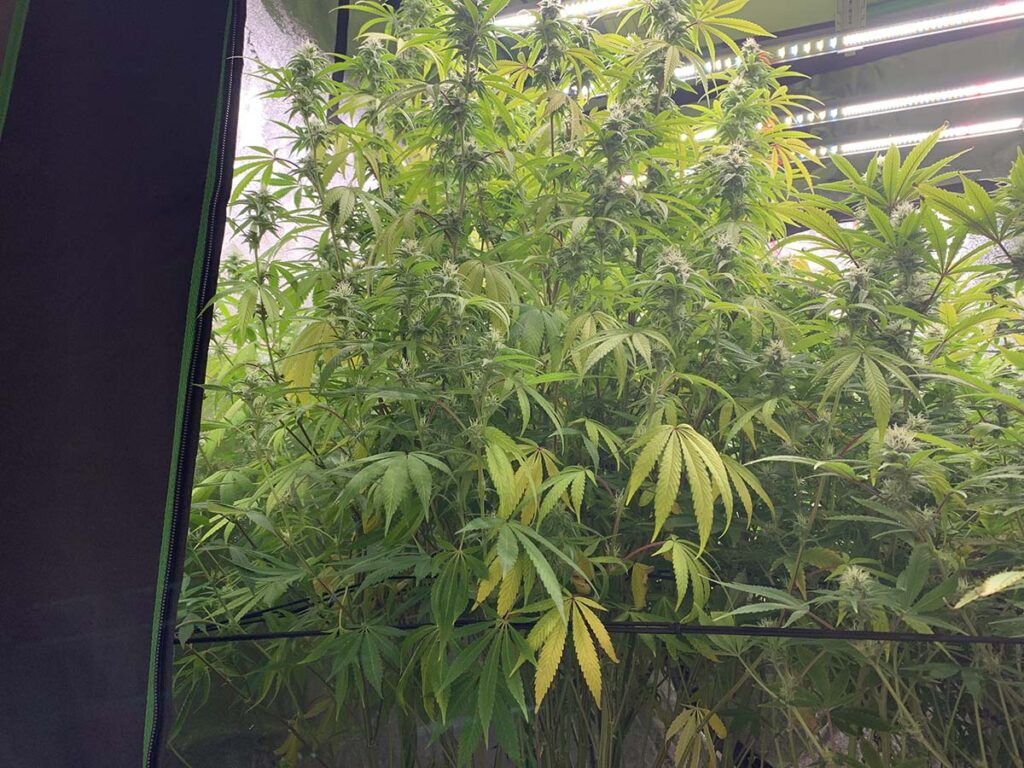
The first sign of nitrogen deficiency in vegetative plants is yellowing in the lower leaves. Nitrogen is a mobile nutrient, so if the plant does not have enough nitrogen to support the entire plant, it will begin pulling nitrogen from the lower, older leaves and moving it to the new growth at the top of the plant.
When nitrogen is pulled from the lower leaves, their chlorophyll dies off and the leaves lose both their green color and their ability to photosynthesize. As the deficiency becomes more severe, lower leaves will fall off and leaves progressively higher up the plant will turn yellow. The plant may eventually become stunted or die if the nutrient deficiency is not corrected.
It is important to note that yellowing beginning a few weeks into flowering is normal and not a sign of nutrient deficiency. Since cannabis is an annual plant, it will eventually drop many of its leaves to focus all of its energy on producing flowers.
How to Fix Cannabis Nitrogen Deficiency?
The fastest way to correct a Nitrogen deficiency is to add additional liquid nutrients. If you are already using a liquid fertilizer with an appropriate NPK ratio, you should slowly increase the dose of this fertilizer until you reach a ¾ dose or full dose. If you reach the full recommended dose and your plant’s symptoms are not beginning to improve, it is possible that something other than nitrogen deficiency is causing your plant’s symptoms.
When you are using synthetic fertilizers, it is important to keep the NPK ratio consistent when increasing fertilizer dosage. Increasing only nitrogen can throw the nutrient ratio off balance and cause additional harm to the plant.
If you are growing organic cannabis, additives such as compost, manure, blood meal, and fish meal can increase the nitrogen available in your soil. Make sure to add nutrients slowly and monitor your soil runoff for changes in pH level.
Nitrogen Fixing Bacteria for Cannabis
A recent study from Rutgers University investigated how plants use nitrogen fixing bacteria in their non-photosynthetic cells. Historically, many biologists believed that plants only formed symbiotic relationships with nitrogen fixing organisms in their roots. However, this study demonstrated that bacteria in plant leaves were able to take nitrogen from the air and transform it into a form that their plant hosts could use.
In the future, this discovery has the potential to dramatically change the way that we fertilize our plants and reduce our reliance on environmentally toxic nitrogen fertilizers. Although our understanding of nitrogen fixing bacteria in leaves is still in its infancy, some brands like Wallace Wow already offer nitrogen fixing bacteria for sale as a gardening supplement.
Mycorrhizae are another soil supplement growers have been using for many years to increase nitrogen uptake in their plants. Mycorrhizae are the filamentous ‘roots’ of fungi, and many species are known to form symbiotic relationships with plants in which they will trade soil nutrients to the plant in exchange for sugars. Products such as BioOrganics LLC’s “Mycorrhizal inoculant plus” can be added to the cannabis plant’s soil to encourage this beneficial relationship to form.
Summary
Nitrogen is one of the most important macronutrients for growing cannabis. While too little nitrogen will cause the plant to drop its lower leaves and slow down growth, too much nitrogen can damage the plant and keep it from absorbing other important nutrients.
During the vegetative stage, cannabis plants should be given nutrients containing a high ratio of nitrogen compared to other macronutrients. Later, in the flowering stage, nitrogen levels should be gradually lowered and phosphorus levels gradually increased.
While growing cannabis, pay close attention to your plant’s growth habits and overall health. If you are under or over fertilizing with nitrogen, your plant will show symptoms that you can use to adjust your feeding schedule and get your plant back to full health within a couple weeks.

Rocky Horton
Author
Rocky Horton is an experienced cannabis grower and the founder of IndoGrow. The IndoGrow editorial team has over four decades of combined growing experience. Learn more.

